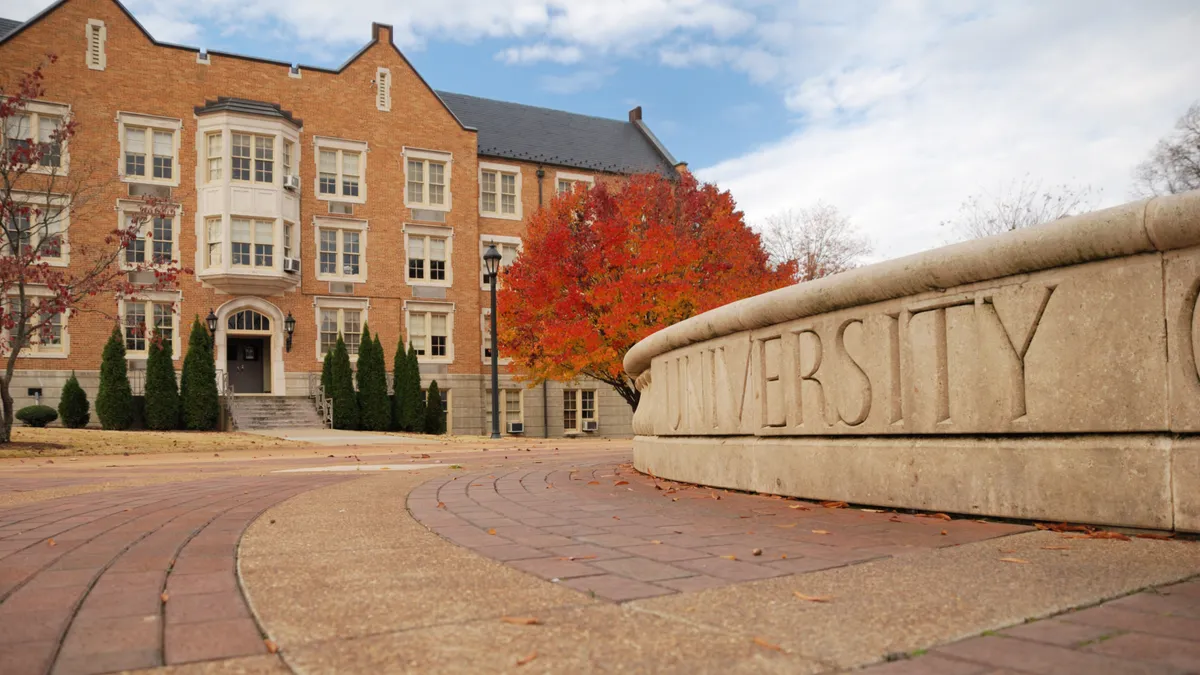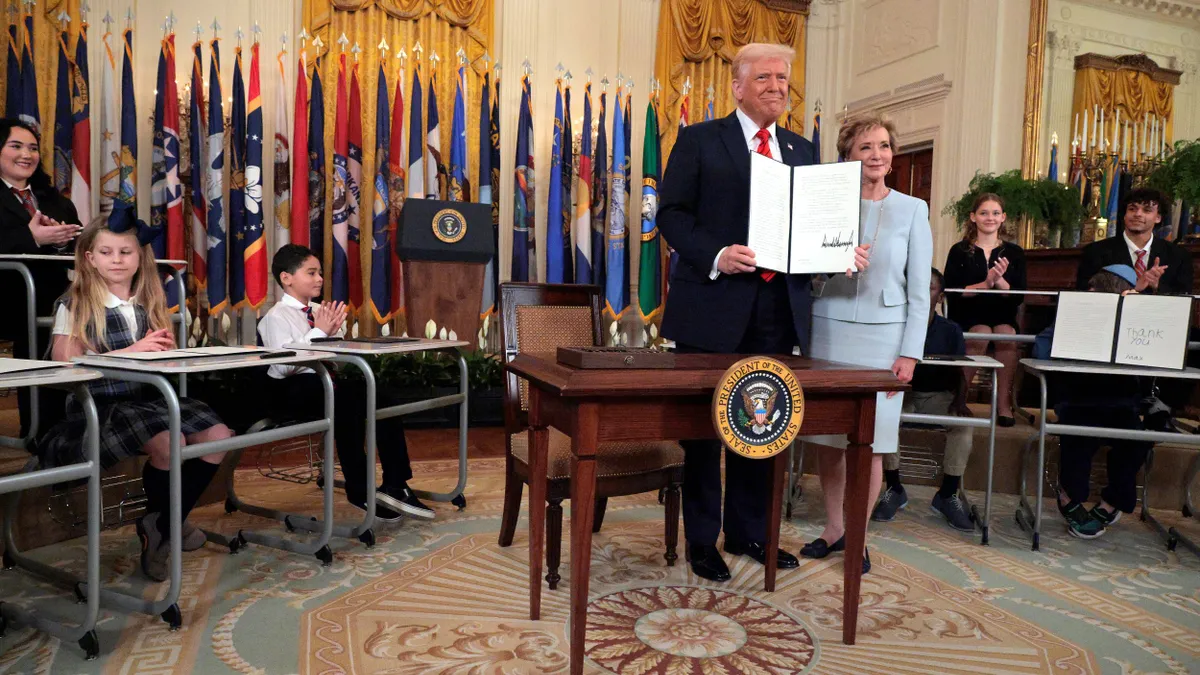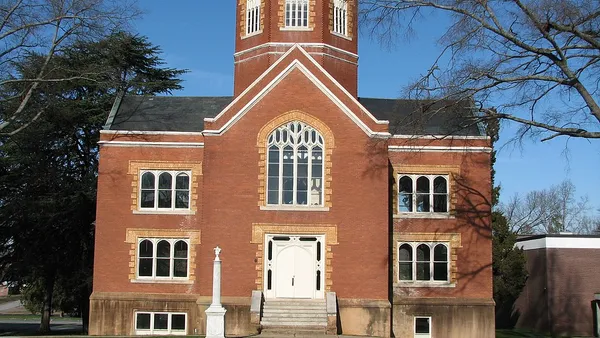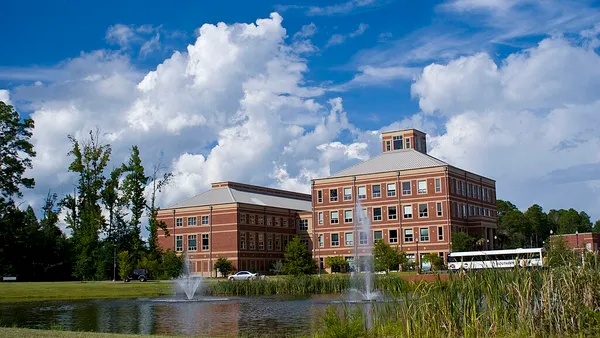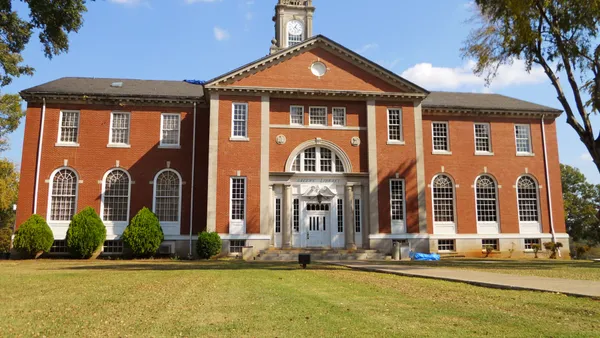Editor’s note: The National Student Clearinghouse Research Center announced Jan. 13 that a methodology error led to incorrect figures for first-year students in its preliminary enrollment data for fall 2024. Further research from the clearinghouse shows that first-year enrollment increased.
Undergraduate enrollment rose 3% in fall 2024 from last year, according to preliminary data from the National Student Clearinghouse Research Center. But a closer look at that data highlights some important trends that could shape higher education for years to come.
That includes a 5% drop in first-year students, a concerning decline that some higher education experts link to the rocky rollout earlier this year of the new Free Application for Federal Student Aid.
The preliminary data set includes about 52% of colleges that report to the clearinghouse. As with all incomplete data sets, it’s important to note that the final numbers could differ from preliminary figures.
Last fall, clearinghouse researchers estimated that first-year enrollment had dropped by 3.6%. But when they finalized results in January, researchers found it had instead grown 0.8%. The final fall enrollment report is again expected in January, the clearinghouse said.
Below, we break down some of the fall term's most notable enrollment trends based on the preliminary data.
18-year-olds drove declines in first-year enrollment
A majority of the decline in first-year enrollment came from the youngest adults, 18 year olds, the clearinghouse found.
In fall 2024, first-year enrollment among 18-year-olds declined 5.8% year over year, after growing 2.9% the previous fall. In comparison, enrollment among students ages 25 to 29 grew 20% over the same period, building on a 15.6% annual increase in fall 2023.
This fall was the first time the clearinghouse tracked 18-year-olds as a distinct demographic, allowing researchers to use the group as a proxy for students who enroll in college directly after high school.
The decline followed concerns that a tumultuous year for federal financial aid and the end of race-conscious admissions would lead to enrollment decreases.
Students who previously began their first year of college are now driving undergraduate enrollment growth. That group includes students who left college without completing a credential.
Earlier this year, the clearinghouse found that 9.1% more stopped-out students reenrolled in college during the 2022-23 academic year than the one before — a trend that appears to be continuing.
Every institution type saw growth — but some came out on top
Undergraduate enrollment increased at all types of institutions in fall 2024.
But those that tend to dominate the higher education discussion — public and private nonprofit four-year colleges — saw the most modest gains. Private nonprofits expanded their undergraduate student body by 1.4%, while the public institutions saw a 2.2% enrollment increase.
In comparison, the number of students attending public baccalaureate colleges that primarily grant associate’s degrees rose 5.2% year over year.
For-profit four-year institutions reported a headcount increase of 4.9%, and enrollment at public two-year colleges jumped 4.7%.
Midwestern and rural states report the biggest enrollment jumps
A majority of states saw enrollment in their colleges grow, with some of the biggest gains clustered in the South and the middle of the country. Maine and Utah reported the biggest increases, of 6.9% and 6.3%, respectively.
This regional enrollment growth could be good news for some colleges in the Midwest, where enrollment increased 2.2% year over year, according to the clearinghouse.
Earlier this year, Moody's forecast that small private colleges in the region would have an increasingly difficult time competing for students against public institutions. It predicted the same challenges for institutions in the Northeast, where many small colleges are clustered.
The clearinghouse data does not show which institution types are driving the enrollment gains in the Midwest and other regions.
Among the 42 states with sufficient data for analysis, just three states and Washington, D.C., showed a decline in students, and each reported a drop smaller than 1%.
The eight states researchers did not include — Alaska, Delaware, Massachusetts, New Jersey, Oregon, Rhode Island, Vermont and Washington — may be part of the clearinghouse's final result.



